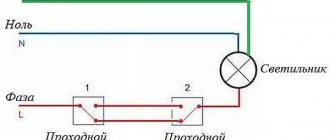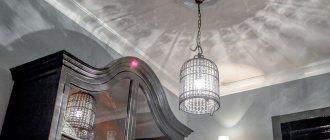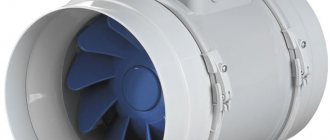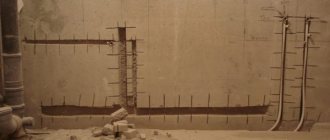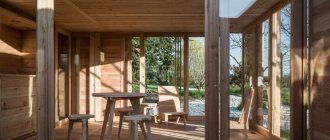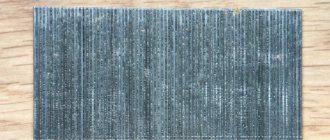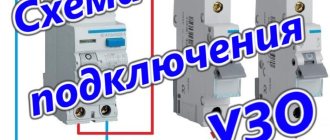Unlike terrestrial cable television, it is not received by an antenna from a television repeater, but is supplied by cable directly to the apartment. This method allows you to minimize signal loss and improve picture quality. Cable TV gives the operator the opportunity to independently regulate the number of channels, their format and encoding method. Cable TV provides subscribers with dozens and even hundreds of channels, both in analog and digital quality. Determining that you have cable TV is quite simple:
if your TV receives more than 20 channels, you are watching cable TV.
Typically, cable operators, to minimize financial losses, calculate the signal level as one TV per apartment. As a result, when wiring cables to several TVs, you have to resort to the help of an amplifier.
"Folk" methods of signal improvement
In general, you can boost the signal of TV antennas with your own hands, without purchasing an amplifier. There are several ways to deal with this:
- Change the direction of the antenna. Perhaps it is simply turned in the opposite direction, and the repeater signal does not reach completely. Move it 1-2 degrees until the quality improves. You will have to act “at random,” but often the problem lies precisely in the location of the receiver.
- Increase the number of antennas. Also an effective method, although it will cost more than buying an amplifier. It is necessary to place several antennas at the same height, pointing at one point. In this case, the signal may improve, although not much.
- Buying a more powerful antenna. Also a good option, especially if you live far from the repeater.
- Shield the antenna. In this case, it is necessary to place some kind of reflector at the back (a common option is a beer can cut in half). It will reflect the waves and collect them on the “antennae”.
As you can see, you can amplify a television signal without an amplifier, although it will be either more expensive or less effective.
What determines the quality of TV broadcasting?
There are several factors that influence the quality of the transmitted image:
- The television receiver is located at a great distance from the signal repeater.
- The presence of external obstacles, both natural and artificial. These can be the walls of high-rise buildings, hills, lowlands and a large number of trees.
- Poor quality connecting cable.
- The antenna is installed in the wrong location or is poorly oriented in space.
- The presence of significant metal structures in the signal path or in the immediate vicinity of a television tower.
In almost each of the listed cases, the leading role is given to the TV antenna. If this attribute is correctly selected and configured accordingly, then there is a real chance of improving the quality of received signals and stabilizing the broadcast.
The industry produces both indoor and outdoor antennas. Where they are installed is clear from their name. Let's look at each type in more detail.
What is an antenna amplifier
Simply put, this is a circuit that suppresses interference and amplifies the main signal. It is based on a block of capacitors and operational amplifiers that greatly increase reception.
Equipment design
The amplifier works like this:
- The antenna receives a cable TV signal.
- First it passes through a smoothing block of capacitors.
- It then passes through several layers of operational amplifiers.
- Then it goes to TV.
Everything is quite simple, because... the scheme is primitive. In general, you can even assemble it yourself.
Before amplifying your indoor antenna, remember that amplifiers are powered by external power. You need to buy a power supply for them, because... usually it is not included.
How to check your satellite dish receiver
Before you begin your next attempt to test the antenna, it is best to try the previous steps again. Perhaps there was a mistake made somewhere. If nothing helps, you can check the receiver for serviceability.
- First, you should go into manual settings and write down the parameters for the satellite of this provider.
- Then, take the device and connect it to another satellite TV.
- After that, select manual search in the menu, where to find the desired satellite and set the already recorded parameters.
- If both scales are colored and have a numerical value, then the receiver is working properly, otherwise it will have to be sent in for repair.
In any case, you should not immediately rush out and buy a faulty element or call a repairman. It is better to try to go through each point of checking the television antenna 2-3 times. And only then can we draw any conclusions.
Advantages and disadvantages
Also, before boosting the TV antenna signal, you need to evaluate the advantages and disadvantages.
Advantages:
- Noticeable improvement in picture quality. In general, for certain zones (regions of limited broadcasting, summer cottages, etc.) this is the only way out. Even increasing the number of antennas will not help here.
- It is possible to work with a weak signal, in which the antenna, in principle, cannot display an adequate image.
- Increasing the frequency range. You can find new channels that did not exist before.
- Reducing the amount of external interference.
And the shortcomings of the amplifier are related to its sensitivity. Indeed, the device is very sensitive, which can be aggravated by the following:
- Improving signal quality. Literally, the amplifier can burn out due to the fact that the supplier installed a new repeater closer to the old one. This causes overheating and subsequent damage. If you find out about the launch of a new relay point, simply turn off the amplifier or replace it with a less powerful one.
- Storm. Lightning striking an antenna can literally burn it. However, the receiver will also burn out.
Methods for amplifying TV antenna power
- Change the location of the antenna. As a rule, it is directed towards the transmission tower.
- Purchasing an antenna amplifier. They are electrical devices that connect directly to the antenna and provide an impetus to improve the received signal.
- Expand the number of antennas for a clearer image, installed at the highest place.
- Change the device to a more powerful TV antenna.
- Remove all objects and metal objects that may interfere with the reception of the TV signal.
- Check the television cable for integrity. In case of short circuits or breaks, replace it with a new one. For a high-quality signal, it is important to choose the right cable.
- Create the effect of a common-mode antenna array (CAR). It consists in the fact that identical receivers form a complex system that operates on a common matched load so that the signal phases are the same.
Knowing how to improve a television signal, you can reduce image noise on the screen to a minimum and enjoy high-quality viewing, regardless of the distance to the television center.
Antenna amplifier
Recommendations for selection
So, how to strengthen the digital television signal? First you need to choose a good amplifier that will work in a particular case.
To begin with, find out in what range the broadcast is made in your region: it can be meter and decimeter. In the first case, the maximum frequency is 300 MHz, and in the second – 3 Hz.
Amplifiers are single-range, i.e. work only in one mode, and are universal with a switch. This is the main indicator that you should pay attention to.
However, it is also recommended to study the following:
- Reception range. The minimum range is 30 km, but 150 is better! The indicator indicates the distance between your receiver and the repeater point. It makes no sense to put everything below 30 km, because... there will be almost no effect. Anything more is wasteful, because... Such amplifiers are expensive.
- Reception gain factor. How to improve the signal? Of course, you need to look at how much the amplifier can increase reception. The rule here is: “The further away the repeater, the higher the coefficient.” For a distance of 50 km, a gain of 27 dB is sufficient, i.e. ratio: 1 dB at 1.85 km.
- Nutrition. Some models are powered by a power supply, others by a receiver. According to customer reviews, the first models work better. On the other hand, the latter are much more convenient, because You just need a long USB cable.
- Frame. Depends on the installation location. Models with a plastic body are suitable for indoor use, and metal ones for outdoor use.
TOP 4 good amplifier
1 Model SWA9001/999/9701 (L) broadband. A good broadband amplifier without adjustment. Suitable for both home installation and mast installation. It is recommended to install an additional metal screen. Capable of picking up a signal up to 100 km.
2 Televes. A good 5-output Italian amplifier with a gain of 15 dB. The signal increase is not very large, but excellent noise reduction is provided. Powered by the included power supply.
3 Gecen A05-02. Satellite and digital amplifier operating in both the meter and decimeter range. It is powered via a coaxial cable, which is not very good, but there is no need to purchase an additional power supply or USB.
4 RTM LNA02. An excellent model with a gain of 20 dB. It has excellent noise reduction and is powered by the receiver. Well suited for broadcast-restricted areas.
Antenna for receiving digital television in the country
It's time to find out that a digital antenna for a summer residence is a marketing fiction. There are no “digital antennas”, “digital cables”, “digital amplifiers”. There are over-the-air antennas, coaxial cables, and antenna amplifiers. Their parameters and cost do not correlate in any way with either digital or analogue TV standards.
A special antenna for digital is an advertising scam. For digital TV in the country, ordinary decimeter (UHF) or broadband antennas (MF-UHF) are suitable.
And yet, what kind of antenna should I put in my dacha for long-distance reception? Multi-director at the highest possible height, precisely aimed at the broadcast tower, will give the best result. As a general rule, longer antennas with more bars (these bars are called "directors") provide much better reception than shorter ones.
Long range antenna
